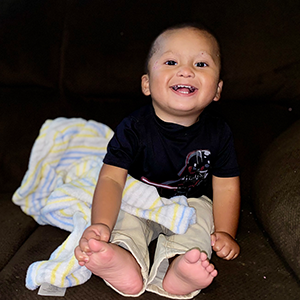-
Research prepares for Mayo’s first larynx transplant
Mayo Clinic has refined a preclinical model that lays the foundation for its first-ever larynx transplant. The model assesses the unique immunosuppressive needs of vascular composite allograft (VCA) transplantation, a type of transplant that requires transferring many different types of tissues, such as muscle, blood vessels and nerves, along with the organ. A larynx transplant is considered a VCA transplant and includes more than just the larynx. It also can include the trachea, esophagus, thyroid glands, parathyroid glands, skin and pharynx — commonly called the throat.
The team, headed by David Lott, M.D., an expert in regenerative medicine and otolaryngology, recently published a paper describing the transplant model in mice to address immunosuppression after larynx transplantation. Not only can this model be used to test standard immunosuppression medications, but it can also be used to test various ways to avoid immunosuppressive medications. Their paper and a video describing this mouse model is published in the journal, JoVE.
"Because larynx transplant is so new, we don't know very much about immunosuppressive needs," says Dr. Lott, a laryngeal surgeon who is also the associate director of Mayo Clinic's Center for Regenerative Biotherapeutics in Arizona. "We don't know about the kind of microenvironment within the body from an immune standpoint. This model allows us to test different types of immunosuppressive medications. There's a lot to learn about this type of transplant."
Mayo Clinic's Center for Regenerative Biotherapeutics supports Dr. Lott's research to advance larynx transplantation as a possible way to regenerate the larynx after cancer or traumatic injury.
Pioneering work
The Mayo Clinic Larynx and Trachea Transplant Program in Arizona is the first and only larynx transplant program to secure approval from the United Organ Sharing Network. Dr. Lott's team has been preparing for years to address the complexities of the surgery.
"All transplants are complex, but we have more tissue types and more moving parts with laryngeal transplantation than other transplants," says Dr. Lott. "The larynx is a true kind of biomechanical organ. Not only is it living tissue, but it also has it joints, and the transplanted organ must be able to move."
After transplantation, patients must take immunosuppressants for the rest of their lives to prevent organ rejection. That carries increased risk of infection and cancer. Dr. Lott's team hopes to use the mouse model to test alternatives that might ease possible side effects.
"We hope to understand if there are ways to use either traditional or new immunosuppression medications that can help decrease the chances of cancer, circumvent side effects and allow for specific tolerance of the larynx," says Dr. Lott.

"A larynx transplant is considered a VCA transplant and includes more than just the larynx. It also can include the trachea, esophagus, thyroid glands, parathyroid glands, skin and pharynx — commonly called the throat."
A difficult quality of life
As many as 60,000 people in the U.S. are living without a larynx, or voice box, mostly due to laryngeal cancer or the residual effects of radiation damage. Others have irreversible traumatic injury to their larynx. The need for new therapies is great, with 12,000 new cases of laryngeal cancer diagnosed every year, according to the National Cancer Institute.
People who have had their larynx removed can no longer swallow or speak normally. They must breathe through a hole in their neck, known as a tracheostoma. Even routine daily activities like taking a shower could be dangerous if water seeped into the opening in the neck.
"Some people have made the choice to live a shorter life than to have a lower quality without their voice box," says Dr. Lott.
Transplantation is most suitable for people with larynx injury or those who have been cured from laryngeal cancer but need a laryngectomy due to radiation damage that hampers their ability to eat, speak and swallow. Dr. Lott's team is currently evaluating patients for this procedure.
Dr. Lott and his team hope the discoveries from their mouse model will not only contribute to the success of larynx transplants, but also could be applied to uterine, face and hand transplants that, like the larynx, involve multiple tissues. Research is ongoing to improve these surgeries.
###








